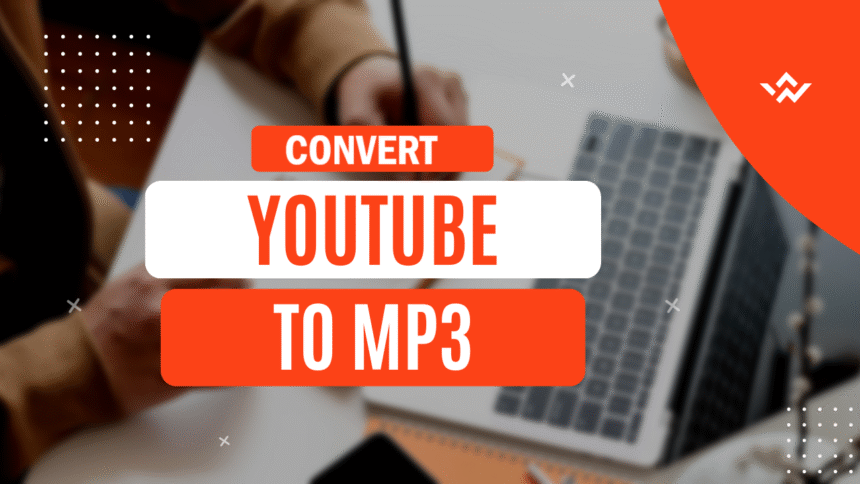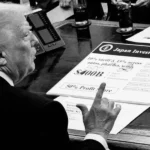Millions want music and audio from YouTube without watching videos each time. A YouTube to MP3 converter makes this simple by turning videos into audio files for offline use. This lets people build playlists, save data, and enjoy their favourite tracks anywhere, anytime.
Searches for “YouTube to MP3 converter” and “convert YouTube video to MP3” have surged lately, driven by the need for quick, flexible solutions. In 2025, users can pick from free online converters for fast results or paid tools with advanced features and better quality. Both groups want reliable, safe ways to access high-quality sound—without clutter or hassle.
Today’s best converters put people first, making it easy to grab audio in seconds. Expect focus on audio quality, privacy, and support for many formats, so everyone finds the right fit for their needs.
How YouTube to MP3 Converters Work
Most people turn to a YouTube to MP3 converter when they want a hassle-free way to enjoy music or podcasts offline. But what happens under the hood of these tools? Whether you pick a speedy web-based tool or a desktop app with extra features, each method follows a process that lets you convert a YouTube video to MP3 and save audio for easy listening.
Online YouTube to MP3 Converter Tools
A YouTube to MP3 converter — free or subscription-based — operates almost entirely in your browser. You just copy a YouTube video link, paste it into a website, and hit convert. The server behind the scenes grabs the video, strips the audio, converts it into MP3, and lets you download the file.
Top online tools like FastConverter and Y2Mate are easy to use. They offer these main features:
- Quick results: Most conversions finish in seconds.
- No downloads required: Everything is handled in your browser.
- Quality settings: Some sites offer choices from basic (128 kbps) up to 320 kbps.
- Support for various formats: Besides MP3, you can often choose MP4 or other audio types.
For many, websites like FastConverter’s YouTube to MP3 Music Converter or AudioCleaner hit the mark for fast, no-fuss conversion. But there are trade-offs:
- Ads and pop-ups are common on free sites.
- Privacy concerns: Uploaded and processed YouTube links may be tracked or logged.
- Limited bulk options: Most web tools convert one video at a time.
- Audio fidelity: File quality can sometimes be inconsistent.
For extra assurance, some users check Reddit recommendations for safe MP3 converters before using a service.
Desktop Applications and Command-Line Tools
If you want more control and privacy, desktop YouTube to MP3 converters are a smart choice. Programs like 4K Video Downloader, MediaHuman, and open-source command-line tools such as yt-dlp or youtube-dl offer a wider set of options compared to online tools.
Key advantages of desktop apps:
- Batch conversion: Download entire playlists and convert multiple videos at once.
- No upload privacy risks: The program interacts directly with YouTube and stores files on your computer.
- Output formats: These include MP3, M4A, AAC, WAV, and FLAC for audiophiles.
- Higher bitrate and fidelity: Many allow you to select the best available audio stream.
- No browser ads or pop-ups: You avoid some of the annoyances that come with web-based tools.
For example, MediaHuman’s YouTube to MP3 Converter lets users download, organize, and tag tracks easily. Meanwhile, advanced users rely on command-line options for scripting bulk downloads or integrating into media servers.
Desktop solutions are favoured by those who value high-quality output, privacy, or frequent use. They’re a reliable pick for anyone seeking more than just a quick conversion.
Browser Extensions and Additional Methods
Some prefer browser extensions to keep things quick and accessible. Browser add-ons integrate right into Chrome or Firefox, putting a YouTube to MP3 converter button on every video page.
While convenient, extensions run into limits:
- YouTube restrictions: Many extensions get blocked by browser stores or YouTube itself.
- Limited format and quality options.
- Privacy and update issues: Extensions may lag behind changes in YouTube’s code.
On mobile, dedicated YouTube to MP3 converter apps exist, but users face similar hurdles. They often have shorter feature lists and more ads or paywalls.
For those who want to avoid direct downloading, audio recording software can capture streaming sound as you play a video. This approach avoids site policy issues, but manual recording is slower and requires hands-on setup.
Still, each conversion method — from a web tool to a command-line utility — follows the same basics: access the YouTube video, extract the audio stream, convert it to MP3, and save the file locally. These tools exist because people want quick, safe, and flexible ways to convert YouTube videos to MP3 for any playlist or device.
Is It Legal and Safe to Convert YouTube Videos to MP3?
Before using a YouTube to MP3 converter, it’s smart to know where you stand. While grabbing music or podcasts for offline listening sounds harmless, copyright law and online safety come into play. Some scenarios are allowed, but others can lead to trouble. Here’s what everyone should know before hitting convert.
Understanding Copyright Law and Fair Use
Copyright makes ownership clear. Most videos on YouTube—especially music, podcasts, and entertainment—are owned by creators or music companies. Downloading these with a YouTube to MP3 converter for personal use can seem safe, but the law isn’t always on your side.
YouTube’s Terms of Service say you shouldn’t download content without permission, except where YouTube provides a download button. Simply put, you legally can’t just convert and keep any video or song found online.
There are a few exceptions:
- Creative Commons or public domain videos: Some uploads use open licenses, letting everyone download, remix, or reuse without the usual limits.
- Your uploads: If you made the video, you naturally hold the rights to convert and share it.
- Official download buttons: If a creator allows it, YouTube sometimes enables direct downloads inside YouTube Premium.
Fair use laws muddy the water. In some cases, grabbing snippets for commentary, criticism, teaching, or research fits under fair use policy. But using a YouTube to MP3 converter solely for listening to full songs or shows rarely qualifies. Commercial use (selling or sharing music you downloaded) crosses legal lines and risks more than a slap on the wrist.
For a deeper look at how fair use works on YouTube, check out YouTube’s official Fair Use guide. These guidelines spell out what might be allowed or restricted when it comes to converting videos for offline audio use.
Risks Associated with Free Converters
While searching for a YouTube to MP3 converter—free or otherwise—the first result may look tempting. But not all converters are safe. Many free sites come with hidden risks. It’s easy to overlook these in the drive for quick downloads.
Key risks include:
- Malware and viruses. Some sites hide adware, spyware, or even ransomware in fake download buttons.
- Aggressive ads and pop-ups. These can trick you into clicking on malicious links or entering personal info.
- Data grabbing. Sketchy converters may log your browsing history, download activity, or even try to access files on your device.
- Phishing. Some sites imitate login pages or well-known brands to steal accounts or passwords.
- No privacy protection. Once you use an untrusted tool, you have little control over what data it keeps about your video selections.
Free YouTube to MP3 converter sites don’t always play by the same security rules as big-name software providers. Users should double-check site reputations, scan downloads with antivirus tools, and avoid giving out any personal information.
Some sites do a better job at protecting users, but many are happy to trade free conversions for your data or expose you to harmful software. Trusted converters reviewed on forums like Reddit or tech blogs are often safer choices, but always weigh convenience against the real risks. For tips on staying safe online, privacy-focused guides and product comparisons can help pick out reliable options.
In short, being aware of copyright law, understanding fair use, and knowing the risks tied to YouTube to MP3 converters is key to making informed and safe choices.
How to Choose the Best Free and Safe YouTube to MP3 Converter
Picking a YouTube to MP3 converter in 2025 is about more than quick downloads. People want the best quality, privacy, and safety—without jumping through hoops or risking their devices. The smartest choice? Look for a reliable, top-rated tool with the features that matter most, backed by a solid reputation. Here’s a closer look at what separates the best from the rest, and what features truly make a difference for everyday users.
Top-Rated YouTube to MP3 Converters in 2025: List and Compare Several Highly-Rated, Secure, and User-Friendly Tools
The best YouTube to MP3 converters make life easier by delivering fast, safe, and high-quality audio in just a few steps. In 2025, both online platforms and desktop software will bring impressive options for anyone looking to convert YouTube videos to MP3 with zero fuss.
Here are several standout tools, each with its strengths and special features:
- AudioCleaner: One of the best online choices for fast, ad-free downloads. AudioCleaner stands out for its consistently clean user interface, strong privacy features, and highly rated MP3 output. Great for single songs, but lacks advanced batch features.
- YTMP3: Easy to use and quick, YTMP3 remains a popular free YouTube to MP3 converter. It offers high bitrate (up to 320 kbps) and supports desktop and mobile browsers, but users may encounter some ads.
- CnvMP3: Known for its simple workflow and quality, CnvMP3 supports converting multiple URLs in sequence. It focuses on safety with fewer ads and limits on personal data collection, but speed varies during peak hours.
- Pinchflat: A browser-based solution praised for its minimal interface and straightforward MP3 downloads. Pinchflat doesn’t require sign-up, which appeals to privacy-conscious users.
- yt-dlp: A top open-source tool for more advanced users, yt-dlp works as a command-line program. It allows for playlist, channel, and batch video conversion, high-resolution audio extraction, and detailed quality controls. Perfect for tech-savvy people who want total control and automation.
Several sources offer detailed breakdowns of the best YouTube to MP3 converters in 2025 and include options like Any Video Converter Free and Movavi. For deeper user feedback and suggestions, many visit community threads discussing clean and reliable converters to spot trusted names with strong reputations for safety.
For those seeking variety, the Movavi guide to top converters breaks down both web-based and offline tools, highlighting platforms that balance speed, simplicity, and advanced settings.
When picking an option, weigh your needs—single videos or playlists, privacy or speed, basic use or advanced features—against each tool’s strengths.
Essential Features to Look For
Choosing a YouTube to MP3 converter—free or paid—can be simple if you know what to look for. Below are must-have features to make your experience smooth and secure, saving you from poor quality, privacy worries, or wasted time.
Start your comparison using this quick checklist:
- High bitrate settings (at least 192 kbps, ideally up to 320 kbps): Crisp, clear audio matters. Tools that support higher bitrate output keep music quality closer to the original.
- Batch download support: Downloading playlists, albums, or dozens of videos? Choose a tool that lets you convert in bulk to save time and clicks.
- Metadata and ID3 tag support: Look for converters that include proper song names, artist info, album art, and more. This feature makes organizing your music library easy and keeps tracks sorted in your player.
- No registration required: The best YouTube to MP3 converters don’t make you create an account or submit an email. Anonymous conversions lead to fewer ads, less spam, and stronger privacy.
- Fast conversion speeds: Time is valuable. Favoured converters process links quickly and make files available in under a minute for most single tracks.
- Safe and ad-free experience: Pick reputable converters with positive reviews, minimal pop-ups, and a commitment to privacy. Avoid sites that push suspicious downloads or force you through ad walls.
- Cross-platform compatibility: Desktop, mobile, Linux, macOS, and Windows support keep things flexible. Tools like yt-dlp and Any Video Converter Free are great examples here.
Don’t forget to check what others say. User reviews and trusted forums, such as the Reddit r/Piracy thread for 2025 converters, offer real insights into performance, safety, and ongoing support.
For a wider view of what top tools offer, browse TechRadar’s roundup of the best converter features and providers and Movavi’s comparison of 2025 converter options.
The key takeaway: don’t settle for a mediocre experience. Prioritize converters that check every box for quality, safety, and user control—making it easy to convert YouTube videos to MP3 in 2025 without compromise.
Step-by-Step Guide: How to Convert a YouTube Video to MP3
Converting a YouTube video to MP3 is fast and simple with the right method. Whether working from a browser, a computer app, or a handy add-on, each approach gives flexibility and quick results. Safety and quality matter at every step. This guide will break down each way and include simple tips for better audio and a smooth, secure experience.
Online Converter Method
Online tools let anyone convert YouTube to MP3 in minutes, with no downloads or installs. These sites work on any device and are easy to use for single videos.
To use an online YouTube to MP3 converter:
- Copy the video URL
Open YouTube, pick your video, and use the Share or address bar to copy the link. - Visit a trusted converter.
Open a trusted site such as the AudioCleaner free converter or WaveVideo YouTube to MP3. - Paste and start a conversation.n
Paste your YouTube link into the converter’s input box. Click “Convert” or “Download” to start the process. - Choose audio quality (if available)
Many sites offer a bitrate selector—pick 192 kbps or 320 kbps for music. - Download and save the MP3
The site creates an MP3 file. Download it to your device for offline listening.
Tips for online conversion:
- Use private/incognito mode if privacy matters.
- Avoid sites with lots of pop-ups or downloads that look suspicious.
- Stick with reputable, ad-light services reviewed by sites like TechRadar’s best converters guide.
Desktop Software Method
Desktop converters are the top pick for lots of downloads or bigger playlists. They offer batch processing and extra controls for quality and file management.
Steps to use a desktop YouTube to MP3 converter:
- Install safe software. Choose a program with good reviews and recent updates, such as Any Video Converter or 4K Video Downloader (see TechRadar’s top picks).
- Copy your YouTube link. Just as with online tools, copy the link from your browser.
- Open the converter and paste the link. Most apps have a dedicated button to insert URLs.
- Pick MP3 as your output format.t Select output quality—again, 192 or 320 kbps works well for most uses.
- Start the conversion and download Start converting. For playlists, use the batch feature to queue many videos at once.
- Find your MP3 files. Check your downloads folder or a custom saved location set in the app.
Safety checks for desktop tools:
- Download only from the official website or verified sources.
- Run an antivirus scan after installation.
- Avoid extra bundled software.
Browser Extension Approach
Browser add-ons place a YouTube to MP3 converter right in your browser bar. These are quick for frequent use, but sometimes hit limits due to browser rules.
How to use a browser extension:
- Install a known safe extension.n Find one with positive feedback—users on Reddit often share updates about working add-ons (Reddit converter recommendations).
- Navigate to your YouTube vi d.. Open the page as normal.
- Click the extension icon. The button will typically appear near or below the video.
- Choose your audio settings and download Adjust bitrate or output path if the option is there.
Security tip:
- Only install extensions from the official Chrome Web Store or Firefox Add-ons, and check user reviews.
- Disable the extension when not using it for better privacy.
Tips for Best Quality and Safety
To get top results and keep your device safe:
- Pick a converter with high-bitrate encoding.
- Avoid entering personal information on any converter site.
- Use antivirus tools on any downloads, especially software installers.
- Read recent reviews and forums (TechRadar and Reddit) for up-to-date options.
Every method—whether using an online YouTube to MP3 converter, a desktop app, or a browser extension—has its strengths. Making smart choices helps you enjoy music or podcasts offline with zero hassle.
Legal Alternatives for Downloading YouTube Audio
It might seem fast and easy to use a free YouTube to MP3 converter, but there’s a smarter, legal way to get audio from YouTube. These options keep you on the right side of copyright law and protect you from the risks linked to unauthorized downloaders. Here’s a breakdown of alternatives that let you enjoy music and podcasts from YouTube with peace of mind.
YouTube Music Premium
YouTube Music Premium delivers a seamless way to access audio legally. With a paid plan, users can download tracks and playlists for offline listening straight from the official app. Key perks include:
- Ad-free music streaming: No interruptions during playback.
- Offline downloads: Download entire albums, playlists, or individual tracks, then listen even when there’s no internet.
- Background play: Keep tunes or podcasts running even while switching apps or turning off the screen.
Pricing is competitive with other music services, making it a strong pick for anyone who listens daily. Like other platforms, it comes with some restrictions. Downloads stay within the app and aren’t actual MP3 files, though the experience mimics “owning” songs in a streaming world. Details about YouTube Premium benefits and service restrictions are spelled out on YouTube’s support pages.
Authorized Streaming and Downloading Services
If you want audio files or legal streaming, consider these established services:
- Spotify, Apple Music, and Amazon Music: All let users save songs for offline play. Like with YouTube Music, these downloads stay within the app to avoid copyright issues.
- Bandcamp: Artists on Bandcamp often sell music directly, usually giving paid customers the chance to download MP3 tracks DRM-free. Perfect for supporting independent creators.
- SoundCloud Go+: Offers offline play for select tracks from emerging and mainstream artists, staying within their app framework.
- Audiomack: This platform features lots of indie artists and often provides direct download options for tracks with the artist’s permission.
Here’s a quick comparison for choosing the right service:
- Cost: Expect to pay $10-12/month for most subscriptions, with occasional discounts or family plans.
- Audio quality: Top services offer high-bitrate audio.
- Restrictions: Offline downloads use encryption and can’t be transferred out of the app, except in the case of direct purchases on Bandcamp.
- Selection: Spotify, Apple Music, and YouTube Music boast vast libraries, while Bandcamp and SoundCloud shine for indie content.
YouTube Music Premium remains unique by combining official music with community uploads, covering some tracks found nowhere else, as highlighted in user discussions about whether Premium is worth the price.
Creative Commons and Public Domain Audio
YouTube itself houses a rich stream of legally available audio–if you know where to look:
- Creative Commons: Many YouTube uploads use these flexible licenses. These videos often come with full permission for download, remix, or sharing. Look for videos marked as “Creative Commons” under YouTube’s filter settings.
- Public Domain: Older music, speeches, and audio now outside copyright can be freely downloaded and reused. Search for labels like “public domain” or check museum and archive channels.
When grabbing audio from these sources, you can use a YouTube to MP3 converter — free and with a clear conscience — since the original uploader has given express permission, or there is no copyright to worry about.
Digital Music Archives and Libraries
Beyond YouTube, several large music archives share MP3s for free and legally for anyone:
- Internet Archive Audio: Includes live concerts, old radio shows, and other historic content.
- Free Music Archive (FMA): Features thousands of tracks from genres across the map, all available for direct download under Creative Commons or public domain licensing.
These sites are treasure troves, offering both rare and popular tracks without any legal headaches. MP3 downloads from these sources don’t lock you into a single app.
Staying Copyright-Compliant
Using an official YouTube to MP3 converter or any download tool only stays legal for personal, non-commercial use if you have rights to the content. For any other scenario, authorized services like YouTube Music Premium or direct artist downloads are the best way forward.
Free converters might promise unlimited music, but sticking to the above options keeps things safe, supports artists, and skips risky downloads. Not only do you get reliable MP3 quality and continuous updates, but you also stay within copyright law—no fine print, no gray areas.
For a deeper look at the exact rules, visit YouTube’s policy page on account and download restrictions or their official YouTube Premium benefits guide.
Exploring these routes lets anyone enjoy endless music and podcasts—offline, legally, and with total peace of mind.
Conclusion
Anyone using a YouTube to MP3 converter should play it smart, stick to best practices, and stay aware of both copyright and safety. The safest approach is to convert only content with open licenses or videos you own, and always respect creators’ rights. Top-rated free tools like CnvMP3, AudioCleaner, and yt-dlp give solid results, but using reputable sources and reading recent real-world reviews helps avoid risky downloads and hidden dangers.
Staying legal isn’t just about avoiding fines—it’s also about helping support the music and voices people enjoy most. When in doubt, rely on official services like YouTube Music Premium or public domain sources for worry-free audio. By focusing on trusted software and responsible usage, anyone can enjoy high-quality offline listening while doing the right thing for artists and their work.














